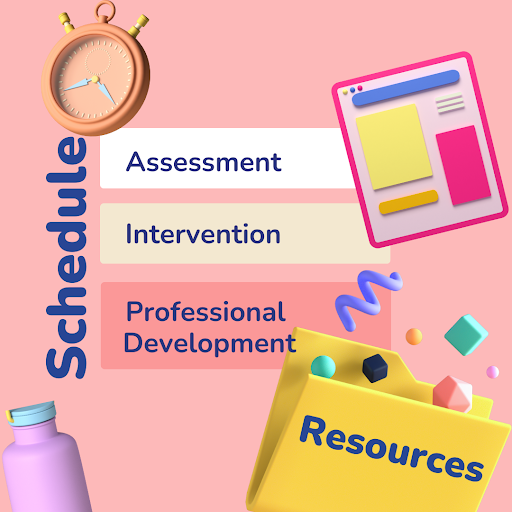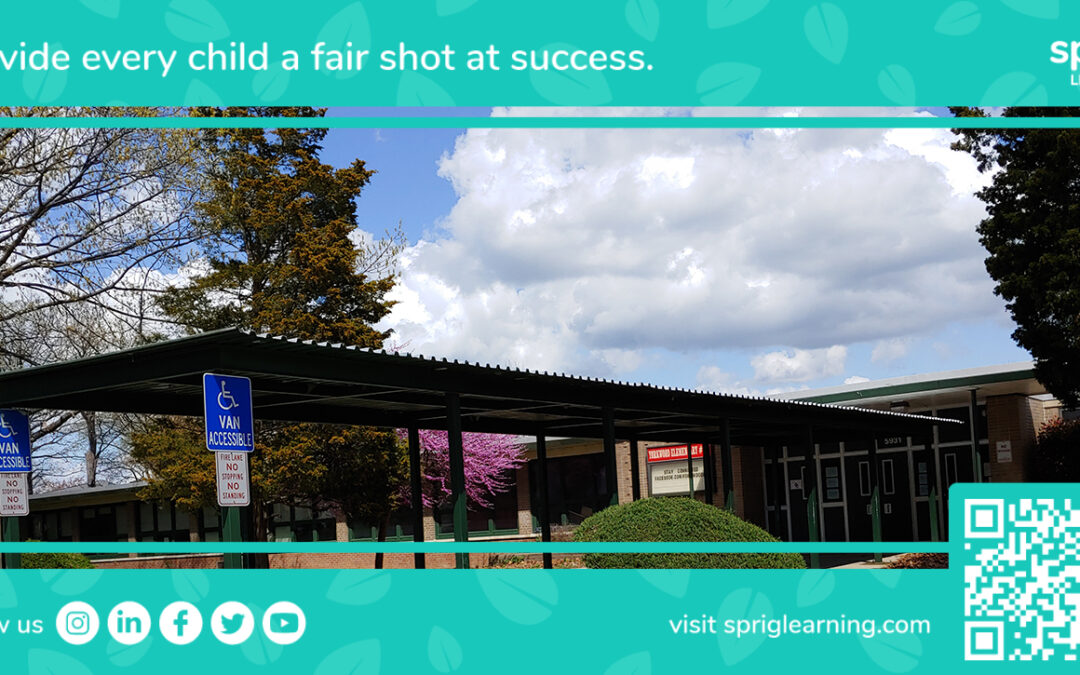This article is the second installment in a two-part series aimed at assisting education leaders in refining and enhancing existing reading strategies and programs for the upcoming school year. If you missed part 1, Starting Strong: How Educational Leaders Can Transform Reading in Their School, be sure to give it a read, as it offers valuable insights into how to lay the foundation for future reading achievement by addressing all aspects within the system.
This article delves deeper into what to watch for and how to continually enhance the implementation and sustenance of a reading strategy once it has been set into motion.
Steps to Uncover Hidden Challenges and Boost Reading Program Performance

Enforcing comprehensive change in response to the increasing number of laws advocating for evidence-based reading practices necessitates a strategic, multi-step approach.
Here are four amazingly practical steps for school and district leaders implementing evidence-based reading strategies, picked from a report published on Reading League, a national education nonprofit led by educators and reading experts. The author is Dena Mortenesen, Elementary Reading and Language Arts Supervisor for Waterbury Public Schools in Connecticut.
1. Analyze and Adjust Assessments
Collaborating with educators and literacy coaches to assess the value of classroom assessments is essential.
It’s crucial to monitor whether existing assessments are consuming more instructional time, as seen from Dena Mortensen’s experience of over two decades.
Evaluate if there’s a universal screener to identify at-risk readers and a curriculum-based measure to track progress.
Remember that school district requirements are only a part of the assessment plan; teachers should also employ diagnostic assessments as necessary to customize lessons for individual students.
2. Analyze Curriculum and Secure Resources
Leaders must ensure alignment between their expectations for teachers and the resources they provide to enable them to meet those expectations.
Empower teachers for success by equipping them adequately. Waterbury Public Schools used their newfound knowledge to establish criteria and make informed choices regarding the provision of materials and human resources.
Dena’s team had invested in a foundational skills program for K3 and also a core reading program for K-5. They had also hired more literacy facilitators.
To kick start the process, start by evaluating the curriculum. Is it aligned with the principles of the science of teaching reading? Verify that teachers have access to research-based materials.
Scrutinize the staffing structure to ensure you have the required personnel to teach the core curriculum and cater to the needs of students who may require additional support. If needed, reassess your staffing model and contemplate hiring extra assistance.
Provide evidence-based rationale to support change in areas where there is a need for overhauling the old way of doing things.
Both educators and administrators become accustomed to the current curriculum and resources. There must be a compelling reason to encourage active participation in adopting new processes.
3. Redesign Schedules
The district implemented schedules that allowed for a total of three and a half hours to be dedicated to core instruction and intervention. Specifically, each school assigned 90-120 minutes to both whole group and small group Tier 1 instruction in reading and language arts.
Additionally, 30-45 minutes were allocated for foundational skills, including phonemic awareness, phonics, spelling, and handwriting or cursive (for grades K-3).
An additional 45-minute block was reserved for intervention or enrichment activities. This scheduling arrangement was designed to ensure that expert reading teachers and tutors could deliver Tier 3 intervention lessons seamlessly across all grade levels throughout the day, without any scheduling conflicts.
4. Provide Systematic and Ongoing Professional Learning
With a roster of more than 400 elementary classroom teachers, it proved impractical to conduct in-person training sessions with each one.
Instead, a system was devised to facilitate scalable training. In this model, 20 literacy facilitators underwent initial training firsthand using a Training of Trainers (ToT) approach.
These facilitators, in turn, conducted training sessions for the teachers. Teachers benefited from continual support through bi-weekly Instructional Data Team (IDT) meetings and coaching cycles.
Beyond teacher training, literacy facilitators themselves underwent specialized professional development to enhance their content knowledge and coaching skills.
Maintaining up-to-date expertise is of utmost importance, with weekly meetings between the literacy facilitators and the concerned personnel to exchange new insights and address any queries.
Additionally, literacy facilitators convene weekly with principals and vice-principals during Instructional Leadership Team (ILT) meetings to deliberate on literacy-related matters.
This approach underscores the significance of continuous, embedded training and communication in achieving success.
Length and Breadth of a Successful Reading Program

Exploring the four steps mentioned earlier provides valuable insights from a teacher’s perspective, considering their pivotal role in early education. Yet, it’s equally essential to view the educational process through the student’s perspective.
This entails assessing individual student learning, comparing to standards and learning expectations, and monitoring their academic journey throughout the primary grades, recognizing the critical importance of each year in this foundational learning phase.
These two themes are explored as follows:
Implementing Research-based Practices across all Three Tiers
Jocelyn Auger, Principal of the Bruce-Grey Catholic District School Board (BGCDSB), discusses the proactive measures her district implemented to enhance early reading proficiency among students.
BGCDSB engaged its top educational and curriculum experts in researching evidence-based reading strategies. Drawing upon resources like Essential Practices of Literacy, Scarborough’s Reading Rope, as well as their internal Reading Continuum and Phonological Screener, they identified deficiencies in their instructional methods that had led to students lacking crucial components in their foundational literacy skills.
The school board began to offer relevant professional development opportunities to their primary team, and hire specialist roles such as instructional coaches and literacy consultants. It also implemented instructional changes in all tiers of interventions.
It also identified next steps such as:
Delving deeper into the science of reading within their Primary Professional Learning Network (PLN). Transitioning to a school-wide PLN ensured that teachers across different grade levels had access to uniform learning resources.
Fostering professional collaboration to tailor interventions for individual students.
Establishing open and transparent communication channels with parents and guardians to discuss the specific strengths and needs of each student.
Embracing the evidence-based science of reading has proven to be a transformative experience within our institution. This literacy approach ensures that every student, irrespective of their background, entry-level, or prior school experience, undergoes systematic and thorough assessment and receives the necessary support.
Continuity In-between Grades
Utilizing assessments, standards, and a well-structured curriculum ensures educational continuity as students progress through the primary grade levels.
Additionally, the abundance of student data offers valuable insights for schools, aiding teachers in effective class planning and decision-making. While kindergarten entry assessments can provide initial insights into incoming students’ academic abilities, it’s essential not to solely rely on them.
A comprehensive approach, including ongoing assessments and observational measures, offers a more accurate understanding of individual student needs, guiding tailored instructional strategies.
Scheduling joint professional development sessions for preschool and kindergarten educators fosters collaboration and facilitates seamless transitions for young learners.
Specific Strategies for Coordinating, Monitoring, and Increasing Instruction Time

Regardless of the nature of challenges that are solved, whether they are teacher or student centric, a lot of it comes down to the actual quality of the instruction in the classroom.
There is so much room for improvement when it comes to the coordination, monitoring, and the increment of instructional time, given the immense weight it holds in the success of reading strategies and programs.
According to Dr. Karen Carlson, former principal of Chicago Public Schools, the most effective elementary schools prioritize a reading-enriched curriculum for all students, commencing in the first grade with a robust emphasis on phonetics.
Furthermore, this approach is reinforced through continuous monitoring to prevent any student from slipping through the cracks.
The following advice is extracted from a thorough two-year study conducted by the Academic Accountability Council, aimed at enhancing the coordination, monitoring, and maximization of instructional time.
Coordinated and Aligned Curriculum
- Implement a curriculum with vertical and horizontal coherence.
- Align school curriculum to local and state standards and assessments.
Monitor Both Students and Teachers
- Employ specific techniques for monitoring educators, such as collecting, reading, and commenting on teachers’ lesson plans on a weekly basis.
- It’s important to be visible and visit classrooms regularly. It’s good to meet regularly with teachers and grade-level teams to review student progress and solve problems that come up.
Increase Time on Task
So much of reading success comes down to the actual spent time on providing instruction.
- Implement smaller class sizes or offer tutoring to maximize students’ time-on-task during regular school hours.
- Create additional learning opportunities before and after school to extend overall learning time.
- Consider extending the school day and academic year for all students, utilizing available discretionary resources.
Focusing on The Right Areas

In the National Research Council’s seminal report Preventing Reading Difficulties in Young Children, the authors had identified three significant hurdles hindering the widespread adoption of effective reading instruction practices.
1) The first challenge stems from a short-term approach to teaching, prioritizing easier-to-learn reading skills while neglecting vocabulary, conceptual knowledge, and reading comprehension strategies.
2)The second obstacle relates to insufficient expertise among educators in effectively teaching these more complex reading skills.
3) Lastly, the limited time within the school day and year presents difficulties in meeting high expectations for children’s learning.
Throughout this article, the lack of research-based instructional strategies, lack of professional development to help understand and teach according to these strategies, and the lack of enough instruction time has been highlighted.
Hopefully, the advice given is helpful in overcoming some of these challenges and creating a roadmap for school administrators seeking to streamline their reading programs as the new school year begins.

